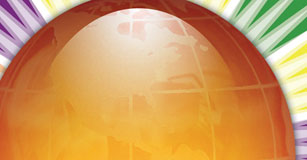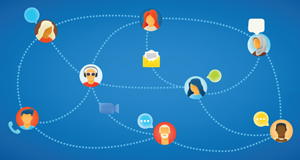Student Reflection & Self-Assessment
4 ideas for building self-evaluation into the learning process
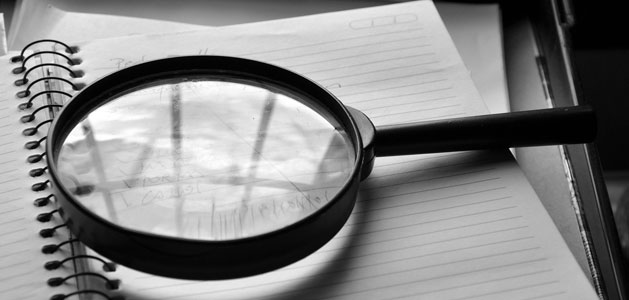
Project-based learning is a student-centered approach to learning, so it is natural to make student self-evaluation an integral part of the process.
Providing time for students to reflect on their work, helps them make connections to previous learning and experience. As Rachel Showalter observes, “students cannot truly improve their product without understanding the content.” Combining this opportunity to deepen learning through reflection with time to self-correct and improve, is an essential step towards meeting standards.
Many educators implementing a PBL or STEM approach use a design process that includes a specific Improve phase that asks students to stop, reflect, and evaluate their work with the intent of returning to the ideation phase to improve upon it.
Asking students to evaluate their strengths, weaknesses, progress, and growth, helps them more deeply understand the causes of their successes and failures and become aware of their learning. This also helps them see more clearly where to focus their energy to have the greatest impact. As they grow their metacognitive skills, students are better able to meet the challenges and thrive in directing their own learning.
Make sure students are clear on standards, learning, and project goals
Before you begin integrating reflection and self-assessment, make sure students have a clear definition or picture of what success looks like. A rubric or checklist can help provide students with criteria they can use to evaluate the success of their work and progress toward academic, personal, and social goals. Successful rubrics and checklists include criteria that provide specific actions students can take to improve their work.
Build in reflection time and procedures for self-assessment
Reflection and student self-assessment require time and are most successful when you add specific procedures for them during the learning process. Work in time for reflection, as well as time to improve their work based on the evaluation.
Here are a few ideas to help you integrate reflection and student self-assessment throughout the process of learning.
Daily Reflection Journals
One of the easiest ways to begin implementing reflection into your classroom is to have students keep a project journal or work log. Provide reflection prompts, or questions, like:
- What new content knowledge did you learn today?
- How did your effort contribute to your success?
- What should you focus on next?
Reflection journals provide artifacts both you and your students can use to see and evaluate growth and progress.
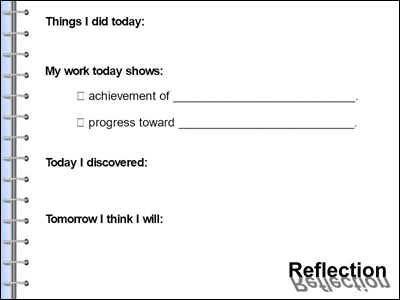
Download a sample Project Reflection page
If journaling seems like it will take too much classroom time, use the last 2 minutes of class for a 3-2-1 exit ticket.
Summative Self-Assessments
In addition to daily journaling, have students complete a summative self-assessment that asks them to reflect on the strengths and weaknesses of their product or performance and evaluate their efforts during the development process. You might ask them to reflect on:
- content knowledge gained.
- project management, leadership, and other skills acquired.
- obstacles and how they overcame them.
- conflicts within a team and their resolution.
- personal insights gained from product and process.
Written self-assessments are a natural part of the reflection process after students complete a project or performance. However, providing time to evaluate their work before it is complete, allows students to improve their work and honors that learning is an iterative process.
Peer Review and Feedback
While peer review may not seem like a form of self-evaluation, reviewing the work of others often helps students more clearly see errors and areas for improvement in their own work. Peer reviews that focus on effective writing, design, and communication provide a useful place to start.
Simply have students “turn-and-talk” with a classmate and complete a “warm and cool” form to direct their feedback.
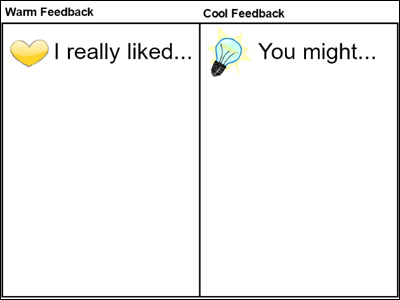
Download a Warm and Cool Feedback sheet page
If students are presenting their work to a small group, provide reviewers with sentence starters to promote critical review and feedback:
- You do a great job of …
- I would love to see more …
- Can you explain …
- What if …
Employing peer reviews during the process with time after for editing, creates a learning culture of growth where students reflect on their work and the work of others and then do the work necessary to improve.
Digital Portfolios
If you want to get serious about integrating student reflection and self-assessment, asking students to craft portfolios of their learning throughout a school year is a must. A learning portfolio is a purposeful collection of student work, combined with reflections about the learning artifacts, that demonstrates student learning and growth over time.

For a portfolio to be a success, students need to be in charge of choosing the work they will include and tasked with explaining via text, audio, or video why it demonstrates growth.
Once again, providing a rubric or similar evaluation criteria will help students choose artifacts of learning and performances that correlate to learning goals, as well as provide a structure for their reflections.
In Conclusion
Reflecting helps students process and organize their learning. As they reflect, students observe how successful they have been during an activity. Then, they work to identify what they learned from their experience.
Combining your formative and summative assessments along with student’s self-reflections and peer reviews can help you paint a clearer picture of student growth and progress.








